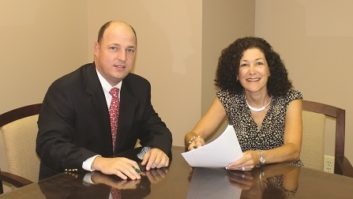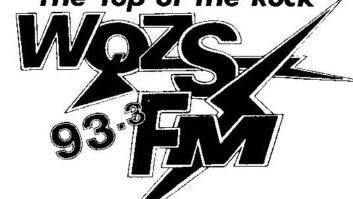The following interview appeared in the recent Radio World eBook “AM Translators: What’s Next?”

Chuck Anderson
Charles Anderson is a broadcast radio owner and FM, FM translator and AM radio engineering consultant specializing in facility improvements including upgrades and moves. He is based in Bowling Green, Ky.
Radio World: You have done a great deal of FM translator consulting. Give us an idea of the scale of the translator landscape for you and your AM clients.
Chuck Anderson: We prepared 54 applications in the 2016 windows including Boston, Cleveland, Cincinnati, D.C., and Richmond for Radio One, and 48 in the 2017 window, and several hundred since the 2003 window.
Although we did the engineering on some large-market translators for Cumulus in Atlanta and Kansas City, we have prepared many small-market applications. Many of our AM clients obtained translators at their earliest opportunity in the 2003 window by purchasing and improving translators that resulted from that window, while others were aggressive in using the 250-mile move opportunity. Several small group owners have been particularly progressive in the use of translators both for AM and HD rebroadcasts.
The whole idea of FM translators for AM owners is no longer a novelty, now that we’ve seen the easing of location rules and had several application windows.
RW: Is the regulatory strategy succeeding? Are AM broadcasters having business success with it?
Anderson: The commission’s actions to allow AM translator rebroadcast, approve the Mattoon waiver permitting more flexible movement, the 250-mile windows, the change in the 2 mV/m — 25-mile rule and now the 2017 window have all had a very positive impact for AM audiences and broadcasters. Jim Bradshaw and Rob Gates at the commission should be commended for their extraordinary and expeditious handling of all of these initiatives and the prompt processing of routine translator applications.
In rated markets, FM translator impact is clearly evident, with many instances of 1 percent or greater shares. Our clients report very positive results with AM translators, citing increased audience and revenues.
At the very least, AM translators are reported to have sustained or improved revenues. One smaller-market client reports that his AM/FM translator combination out-bills three co-owned FM stations and that the audience is clearly listening mostly to the FM translator. We hear that many operators mainly promote the FM frequency, and one broadcaster suggested that many AM licensees would gladly surrender their AM license if they received a protected license for the translator. Daytimers with limited or no night service have clearly benefited from the ability to provide local sporting events and other programming at night.
It seems fair to say that, at the least, an FM translator maintains what would otherwise have been declining audiences and revenues.

Planning a project.
RW: Who among radio group owners have pursued the strategy with notable success?
Anderson: Among the large groups, iHeart and EMF have been the most active. Among our clients, Radio One and Midwest Communications were very active in the 250-mile window. Bud Walters, president and owner of the Cromwell Group, was one of the earliest FM translator innovators and has a total of 23 currently used for AM, HD2/HD3 rebroadcasting and FM main channel fill-in, including six in the Nashville market. And Bobby Caldwell’s Arkansas group has 10 from the 2003 window and acquisitions and applied for eight more in the 2017 window.
His group uses translators primarily for AM, and cites the added value of night coverage for AMs, especially in covering local sports and community events and bringing new audience that might not have listened to the AM.
We are not aware of any broadcaster who regrets having obtained an FM translator. All tell us it was a good investment. Most are very positive about its impact.
RW: What might broadcasters in other countries learn from this unusual U.S. spectrum policy approach?
Anderson: That would depend on the broadcasting models. It is clearly an efficient use of the spectrum to increase the number and diversity of radio services, particularly in small and medium markets.

W240CP, W248CF and W281BV, all with 250 Watts and combined into an inexpensive two-bay broadband antenna at the top of the tower, prove excellent service to Bowling Green, Ky.
RW: We’ve heard a good deal about concerns over interference and the fact that translators don’t enjoy as much protection as a secondary service. What should broadcasters know?
Anderson: FM “fill-in” translators, now numbering in the thousands, have changed the radio broadcasting landscape. They have achieved a more vital role in community service than implied by their “secondary” regulatory status. Many of these translators provide community services and programming content of equal importance to that of a full-power station, even in large markets.
Accordingly, in our opinion, they deserve a status commensurate with their service, even if short of that afforded full-service stations.
There should be a definitive basis for determining valid interference complaints where stations have reliable and usable service beyond their FCC-protected contours which deserve protection but short of what a colleague has described as the “owner’s contour,” which may extend as far as the best receiver can detect a discernible if not listenable signal. The FCC “protected” contours are defined by terrain only from 3 to 16 km from the transmitter site. In many cases this underestimates the actual usable signal. However, there are instances where Class A FMs are claiming listeners 35 to 45 miles from their transmitter site, while the protected contour distance is some 18 miles.
One broadcaster has aptly differentiated between “local” service and “distant” service, whether it is provided by a full-power station or a translator, suggesting that “local” service should be protected in either case and “distant” service should perhaps be secondary.
Translators in small and large markets have substantial audiences that would logically outweigh a few listeners at a great distance and substantially outside the primary, protected contour of a full-power station.
In one instance an AM translator serving a market of 300,000 was ordered off the air based on complaints from a dozen or so listeners who wanted to listen to their hometown station, a rural Class C station 90 miles away. This would appear to be entirely incongruent with the rural radio rules, which prohibit rural stations from moving to urbanized areas, or in this case serving an urbanized area.
Commission action to clearly define a boundary for interference complaints is needed. We have suggested adding a 6 dB buffer zone to protected contours, beyond which interference complaints would not be considered.
The commission should relax the rules to permit non-adjacent channel moves for translators facing interference complaints. NAB has proposed such an action in a proposed rule-making. Full-power stations are permitted to make same-class moves to any channel in the commercial band. Translators should have the same flexibility in order to provide some additional security for their financial investment and now the bulk of their audience.
The commission should also eliminate the antiquated IF spacing for translators, permitting many to increase power from 99 Watts to 250 Watts, and relax the use of the Mattoon waiver, now limited to AM translators and a single “hop,” to permit at least one additional “hop” as well as permitting its use for FM fill-in translators.
RW: Are there engineering considerations to keep in mind at the start?
Anderson: Selection of frequency and transmitter site are critical to a successful translator installation. In addition to evaluation of interference risk to full-power stations and other existing translators and LPFMs, the predicted translator’s 60 dBu should be driven to evaluate incoming interference levels on frequencies under consideration.
In selecting frequencies for FM translators and modification applications, broadcasters should carefully evaluate the potential for interference where there is not intervening terrain blockage in the path to close co-channel and adjacent channel stations.
Usually a buffer of at least 16 km between the protected station’s contour and the translator’s interference contour are advisable. However, in very flat terrain and in instances where the translator has a high HAAT (e.g., 500 to 1,000 feet), greater protection may be needed, since our experience indicates that the actual interfering contour at these heights exceeds that predicted by the §73.333 curves. Broadcasters should drive potential translator frequencies toward the closest co-channel and adjacent channel stations to establish the location of listenable signals that should be protected. Longley-Rice prediction of interference is also useful in risk analysis.
An AM site is not necessarily a good site for FM translator coverage. Everyone knows height is important for FM sites, and it is even more vital to FM translator coverage. Again, Longley-Rice is an excellent tool to evaluate potential coverage. Broadcasters should also be aware that locating a translator on a tower in an AM directional array will trigger an expensive partial proof or a method of moments proof.
At translator power levels, FM combiners become economical. We have combined three FM translators into a single inexpensive broadband antenna in Louisville, Glasgow and Bowling Green, Ky., with excellent results. The three translators we developed in Atlanta for Cumulus are combined into a single-bay panel at 1,000 feet also with excellent results. A combiner may be the only solution where favorable tower space is otherwise unavailable.











